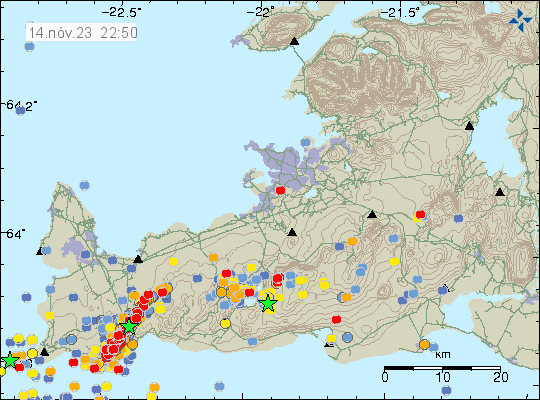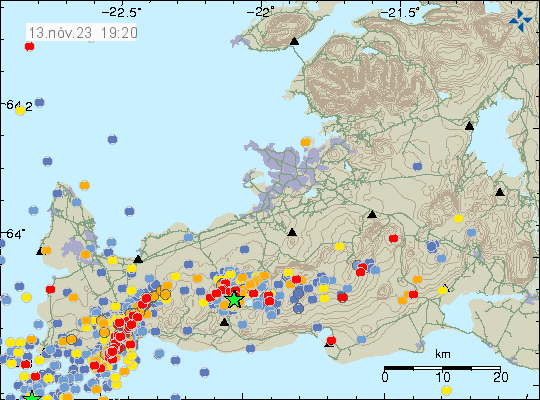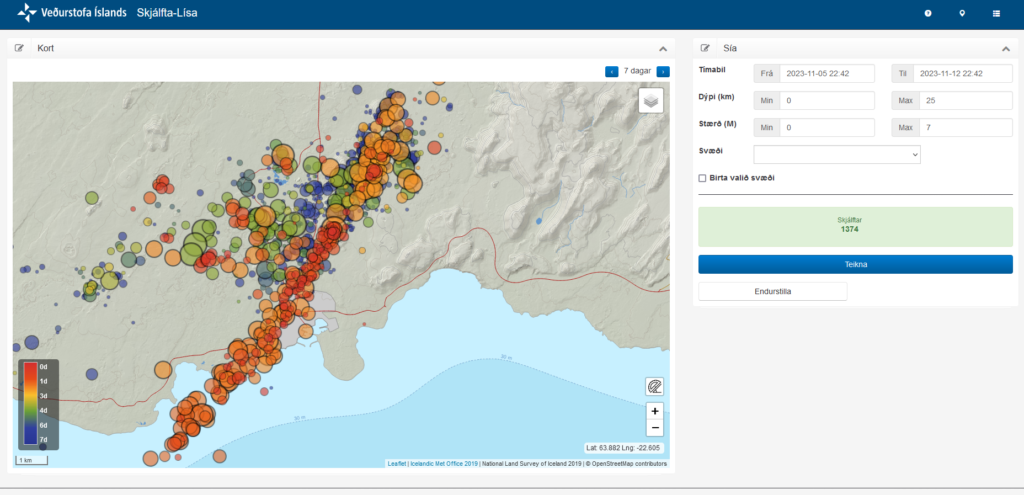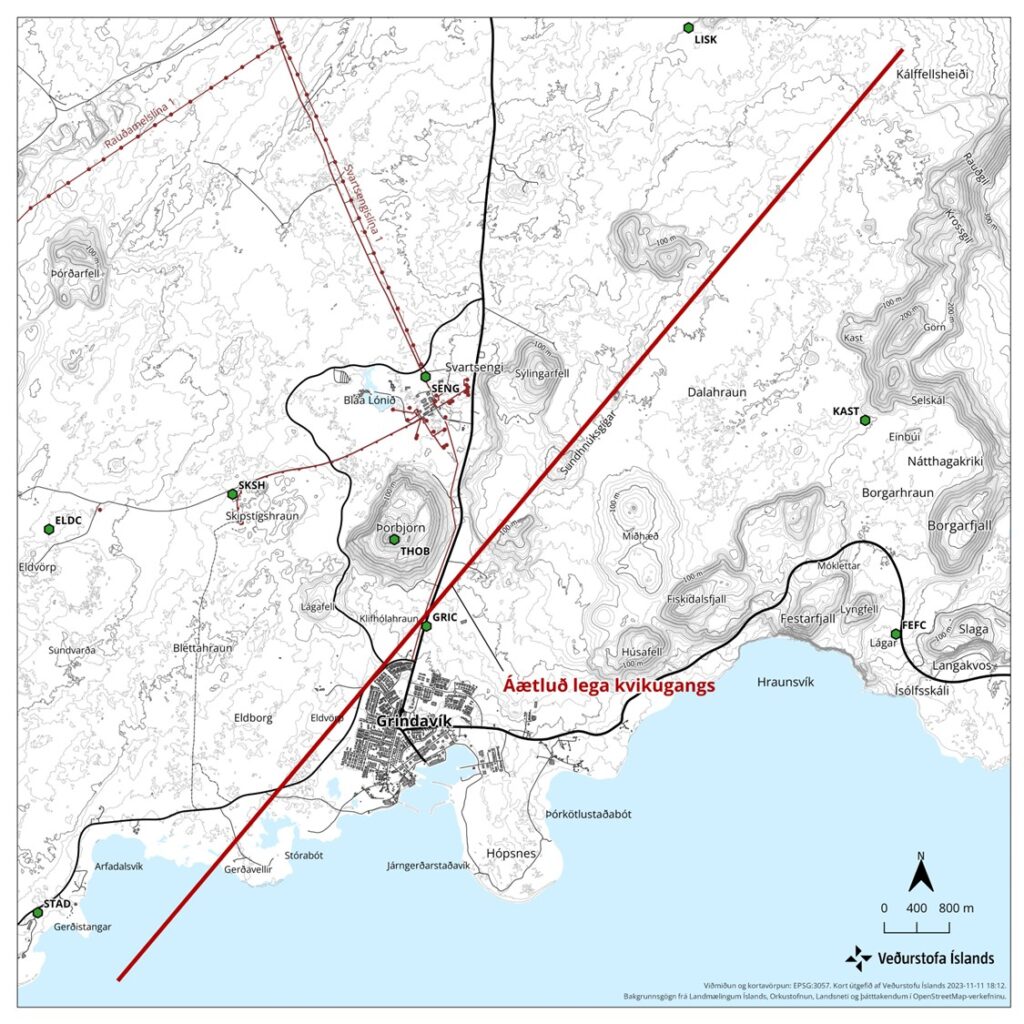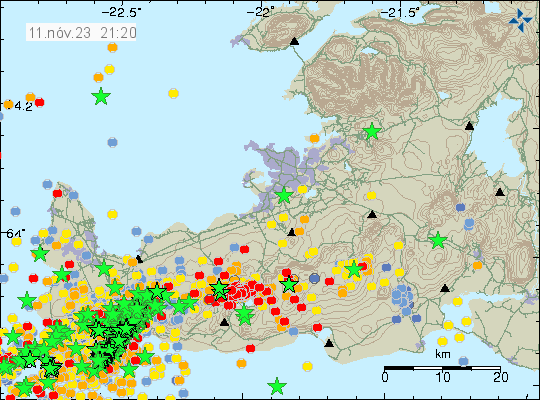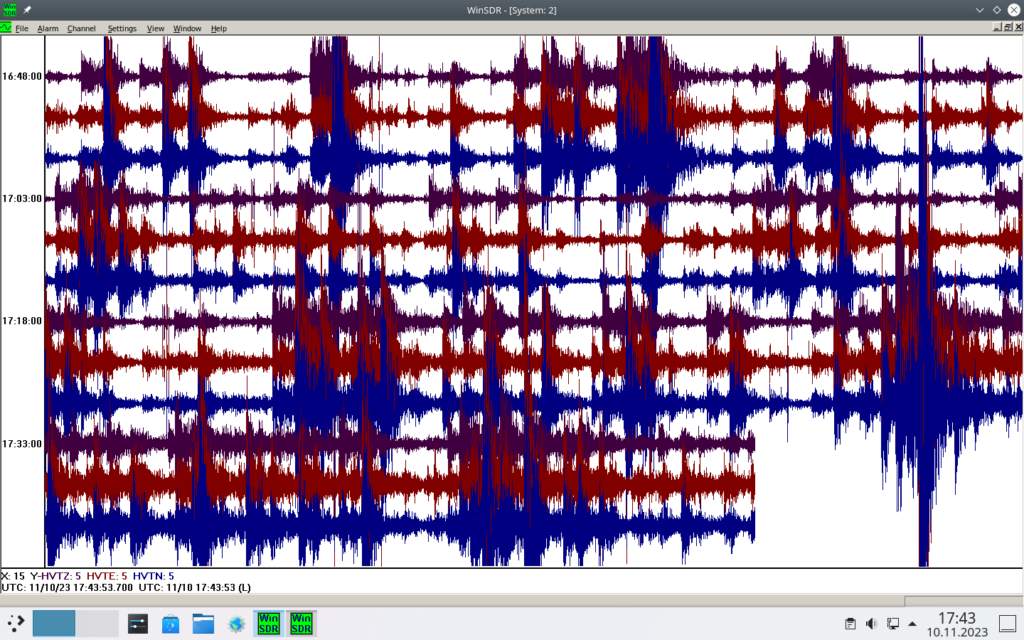This is a short update on the situation in Grindavík on 17. November 2023. Information here can go outdated quickly and without warning.
Daily updates
- Grindavík town continues to sink as the rift valley continues to move. The speed of sinking has slowed a little according to the news today.
- Earthquake activity has slowed down in last few hours (this is written around 22:51 UTC). What that means is unclear.
- Some houses in Grindavík town have been completely destroyed. Iceland has a natural disaster fund for this type of situation and that is going to cover the owners loss according to the news.
General update
It took me a week. But it seems that this dyke intrusion under Grindavík town is because of the magma sill (dyke) under Svartsengi. That area has inflated around 110mm in a week. That is a inflation of 15mm/day based on my best calculations. That is a lot of inflation, since before 10. November the inflow of magma into Svartsengi was at most 8m3/sec according to measurements of Icelandic Met Office.
The sill in Svartsengi created a lateral dyke in Sundhnúkar and nearby areas. When the pressure in the sill is high enough again it is going to push the magma into the dyke at Sundhnúkar again with the same force as it did before. How long that takes I don’t know. Last time this was from 25. October to 10. November. That’s seventeen days, but there was a lot of deeper sills in Svartsengi and its impossible to know much, if anything flowed form them into the dyke. This is my personal view, it might be wrong. But this is what I am reading from the data.
Risk of the eruption remains high because there’s a ongoing inflation at Svartsengi. When a eruption starts is impossible to know.
If anything happens. I’ll post update soon as I can.

